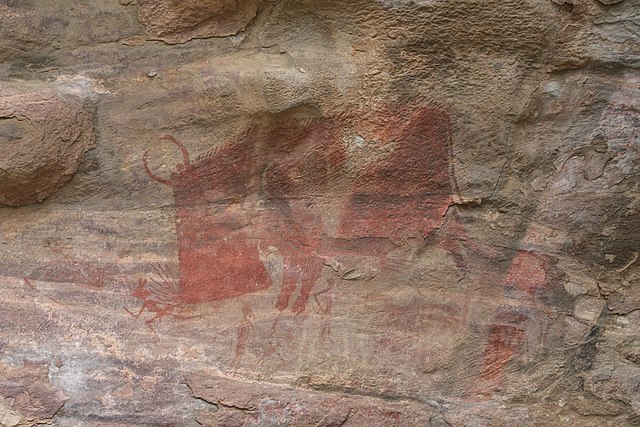The Mahājanapadas were sixteen kingdoms or aristocratic republics that existed in ancient India from the sixth to fourth centuries BCE, during the second urbanisation period.
Pottery of the Northern Black Polished Ware culture (c. 500–200 BCE)
Silver coin of Avanti mahajanapada (4th century BCE)
Coin of Early Gandhara Janapada: AR Shatamana and one-eighth Shatamana (round), Taxila-Gandhara region, c. 600–300 BCE.
A coin of Takshashila, portrays a tree flanked by a hill surmounted by a crescent and a Nandipada above a swastika.
Anatomically modern humans first arrived on the Indian subcontinent between 73,000 and 55,000 years ago. The earliest known human remains in South Asia date to 30,000 years ago. Sedentariness began in South Asia around 7000 BCE; by 4500 BCE, settled life had spread, and gradually evolved into the Indus Valley Civilisation, which flourished between 2500 BCE and 1900 BCE in present-day Pakistan and north-western India. Early in the second millennium BCE, persistent drought caused the population of the Indus Valley to scatter from large urban centres to villages. Indo-Aryan tribes moved into the Punjab from Central Asia in several waves of migration. The Vedic Period of the Vedic people in northern India was marked by the composition of their large collections of hymns (Vedas). The social structure was loosely stratified via the varna system, which has been incorporated into the highly evolved present-day Jāti-system. The pastoral and nomadic Indo-Aryans spread from the Punjab into the Gangetic plain. Around 600 BCE, a new, interregional culture arose; then, small chieftaincies (janapadas) were consolidated into larger states (mahajanapadas). A second urbanisation took place, which came with the rise of new ascetic movements and religious concepts, including the rise of Jainism and Buddhism. The latter was synthesised with the preexisting religious cultures of the subcontinent, giving rise to Hinduism.

Timeline of Indian history
Mesolithic rock art at the Bhimbetka rock shelters, Madhya Pradesh, showing a wild animal, perhaps a mythical one, attacking human hunters. Although the rock art has not been directly dated, it has been argued on circumstantial grounds that many paintings were completed by 8000 BCE, and some slightly earlier.
A dolmen erected by Neolithic people in Marayur, Kerala, India.
Stone Age (6,000 BCE) carvings of Edakkal Caves in Kerala, India.








